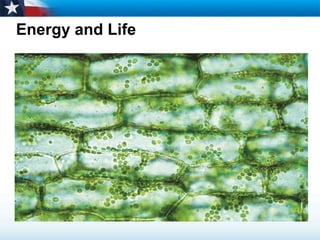ATP is an important energy-storing molecule in cells that is produced when phosphate groups are added to ADP. Cells store energy by converting ADP to ATP, and release energy by breaking ATP back down. Plants produce their own food through photosynthesis, which converts sunlight into chemical energy stored in carbohydrates, allowing plants to produce ATP and be autotrophs.








